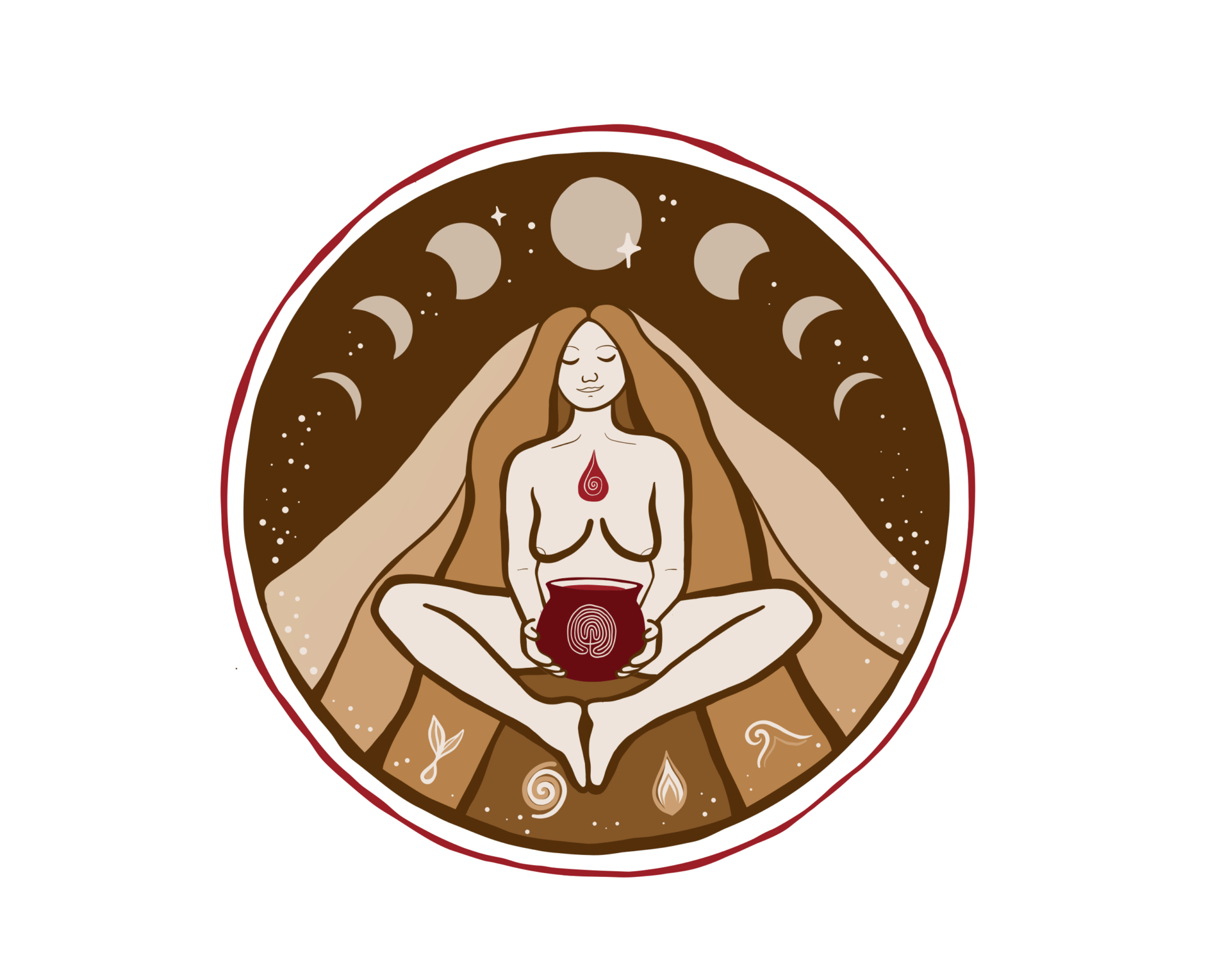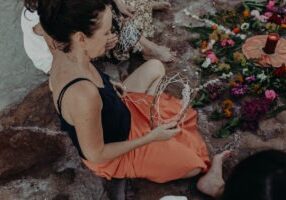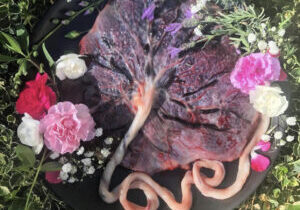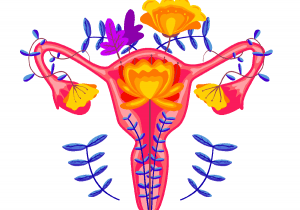The Holistic Stages of Labour
May 9, 2024
Written by Whapio Dianne Bartlett, Traditional Midwife and Director of The Matrona
I love this beautiful article, and I have shared this many times over the years with the women I have supported on their birth journey.
Dianne shares what she has learned over many, many years of observing women give birth as a Traditional Midwife. She references a woman's journey into an altered state as "the holistic stages of labour."
So go grab a cuppa, get comfy, and enjoy the read!
- NB - every woman's labour journey, and who she choses to have (or not have) there with her, is completely unique, and may, or may, not unfold in a way similar to described below.
Embarkation (Pre-labour and Latent Labour)
Labour is a Journey. The preparation has often been elaborate, conscious and consuming. There is usually an all-important ritual of Arrangement preceding the actual event. We call it nesting and Mother has moved about in a final flurry of activity, taking care of all last details…clothes are washed, food fills the freezer, house is ship-shape…all is in order.
Nesting is part of Embarkation. Mother senses that labour is soon. Perhaps contractions and the loss of a bit of the cervical mucus has offered a hint that the journey is about to commence.
Then it does begin and Embarkation is also the time when a woman realises that labour is truly here. Mother is excited, maybe a bit nervous, concerned for the welfare of her loved ones having made sure that they will be well taken care of while she is gone. As the Journey is launched she may call all her family to her to bid them goodbye or, depending on her custom and constitution, she may silently take leave with her partner and companions. Usually, at this time she alerts her chosen caretaker. If she is birthing at home, she notifies her midwife who may or may not arrive immediately depending on the mother’s preference. If she is planning to give birth in a hospital or birthing centre, she may notify her chosen caregivers and remain at home until other changes occur. Often, mums wish to spend time acclimatising to the sensations the body offers before they actually connect with their birth attendants. Most mums are aware that labour is still in early phases and are excited and managing their energy very well.
During this time the Mother often feels like talking and sharing impressions as she is pulled away from ordinary reality. She may be chatty and relate information about each contraction or each sensation. She usually stays centred as she is stretched and moulded; her sensations become stronger, more intense, powerful. Most Mums experience this as varying degrees of pain. The waves of contractions repeat with increasing intensity and frequency and the Mother is swept toward the Unknown.
In modern parlance this time would be considered pre-labor and the latent stage of the First Stage of Labour. Physically, the cervix is beginning to efface and dilate and this stage lasts until the Mother reaches 4 to 5 cm dilation. Contractions are usually 30 to 45 seconds long and 5 to 10 minutes apart. As Mother comes closer to the chasm that separates her from ordinary reality, contractions build in intensity and become coordinated and rhythmic. It becomes apparent that the Mother is being called away – she is less and less present in ordinary reality with each successive contraction. Her chatty persona disappears, replaced with a growing seriousness.
As she feels herself pulled toward the Veil she will probably want to connect with her caregivers. She may feel the need for the presence of the midwife or doctor because she understands that she will be leaving ordinary reality, taking a definitive step into the unknown, and she wants her caregivers to be aware and ready to witness.
Entering the Veil (First Stage, Active Labour)
The Mother reaches a point in her traveling where it is time for her to go alone. The endorphins released by her body during her embarking have begun to change her consciousness and she enters, more deeply, the realm of the altered state. She travels to the edge of her normal reality, parts the Veil and goes beyond. The Veil is my nomenclature for the curtain that separates ordinary reality from the deep altered state. Brain wave patterns have begun to slow down and change from Beta (ordinary reality) to Alpha (the bridge into the subconscious) in the Embarkation phase. Now, in the next stage of labour, brain wave patterns slow down even more and mother has access deep into Theta (the subconscious). The aloneness reflects the fact that women move into a place of self-direction that seems to emanate from a grounded yet altered place in them. The Veil is that stage of labor that heralds the change to this new place. This doesn’t mean that a mother wishes to be alone and that others are not relevant. Rather, it signals the shift into a more self-directed realm.
Mothers may approach the Veil several times before deciding to move through. Circumstances may also prevent the mother from moving through. Constant questioning, especially about mundane affairs, and interruptions in mother’s rhythm serve to bring mother back to ordinary reality.
At the Veil, Mum no longer feels chatty and often the experience of something more serious and profound presents itself. She begins the process of separation and while the mum is aware of details and specifics occurring in the room, she becomes less interested in them.
There is often a palpable smell in the air or a subtle but perceptible colour change in the room that marks the presence of the mother at the Veil. Many caregivers can calculate the flow of labour by these signposts, making yoni exams redundant at this point. I have experienced colour changes and find this to be very reliable and helpful for me as I witness a mother’s journey.
In conventional terms, the Mother has achieved 4 or 5 cm dilation and the character of the labor changes. Contractions begin to be about 60 seconds long and about 5 minutes apart. Mother may seem to act a bit more spacey and unfocused to caregivers in the beta mindset.
Between the Worlds (First Stage, Active Labour)
During this time the Mother craves privacy, silence, warmth and the intimacy of the dark. She looks to her Guardian to know that she is safe and that no one will breach the sacredness of her travels by distracting her or leveling any expectations on her. But most importantly, she looks to her Partner to see if he* is with her. She reaches for him to bring him into the vortex and together they speak a silent language as the sensations between them become more powerful and intense. No one may disturb them; they are Between the Worlds. They become tuned to rhythm of this process and perhaps to the spirit and soul of their child. They may have visions, see colors, hear the voice of their child. Whatever their experience, it is unique and relevant to them as partners, parents and family.
This place Between the Worlds is the trance-like altered state where the opportunity exists to access the mystical state of transformation. Profound realisations may occur; new truths may become evident. Non ordinary reality may bring forth new information and new perspectives that forever alter the consciousness of the individual and the family. Mother is no longer in Beta, way past Alpha and moving through the deepest states of consciousness…Theta and Delta (beyond the subconscious to unconscious). It is important not to interfere with the birthing couple and it is seldom necessary.
Mother stays upright, moving with her labour, moving with her contractions. They become longer and stronger – from 60 seconds to 75 seconds, almost to 90 seconds. At this time her dilation moves from 5 cm to 8 or 9 cm. Labor is considered hard now and often painful…at the least, strong and intense. Mother has coping strategies. She is not lost. She has what it takes to find her way. She doesn’t usually need words…simple reassurance in the form of present companions who give her privacy and offer safety, although sometimes quiet murmurings of respect and affirmation may afford the mom an understanding that you are there if needed. Sometimes humming or soft singing, from another room, may provide the mom with any needed reassurance. Mother may wish touch, eye contact, the healing powers of water…or none of the above. I’ve learned to make no assumptions. Now, I follow the mother and the journey. Again, the Art of Midwifery is inherent in being able to provide for the needs of any women, whether she wishes company or aloneness, eye contact or someone in the next room. The Art is being able to individualize your presence to the preferences of each woman. I often take a position in the corner, quietly witnessing, though not observing or intruding on the birthing couple‘s privacy. After all, what could possibly be wrong if the caregiver is knitting in the corner.
Mother climbs higher as she plunges deeper.
The Summoning (End of First Stage — Transition)
Mother becomes aware that she is nearing the peak. She is deep in a vortex, past anything she has ever known.. She has been continuously opening to wisdom, opening to revelation and now she comes face to face with the apex of her labor. This is what she has come for – accessing the new spirit, the new person that is her child and her Partner’s child, and bringing this soul to Earth. She hears the Summons, she summons her child and together they make their way back. This is often the most precarious part of the journey. Mother must summon all her reserves and she may want to know that her Partner is totally present and supportive. She assumes her caregiver is following their course and holding everything steady on the other side of the storm. Mother is braver and more courageous than ever before in her life.
Transition is considered the most intense time for Mother. Contractions are long and hard – 90 seconds plus and coming 3 or 4 minutes apart. She is reaching toward 100% dilation or 10 cm. This is as open as a woman can be. Of course things may seem hectic and often the Mother flounders briefly during this supreme openness. She may say that she cannot go on or that she wants to go home. She may have a wild-eyed look and seek the presence of others. She may ask for help but I have noticed this is not the authentic need for someone to do something, rather it is the calling out to be witnessed in this hardest phase yet. Sometimes the presence of another person, especially one she loves and trusts, will restore calmness. And sometimes, the presence of another will allow her to feel safe and she will then rage to the end of the universe. Her personal tempest may take her far from ordinary reality. She will become the storm, become wild and incredibly powerful. Caregivers and partners may be amazed, even intimidated. Mother will find her way however it takes.
It’s important to note that birth does not look any particular way. Some moms are calm, some are wild. Some labors are fraught with pain, some are totally bearable, some are even orgasmic. I am not suggesting that any style of birth is better or more conscious than another. What I am saying is that when the mom is in her authentic power, no matter how that may appear, her birth is normal, natural and perfect for her. I am also saying that when a mom is imprinted by cultural or caregiver mores or prevented from accessing her instinctual wisdom, her experience of birth may be unbearable, agonizing, out of control, humiliating and shameful.
At this time, a woman often needs to find her own way. She needs to hear the Summons in her own language and on her own terms. When she does, the journey toward home can be initiated. Any distraction at this time can be confusing and dangerous but I have witnessed women be flexible and powerful and rise above danger and distraction with astounding regularity. During this time of openness, women find their way, find themselves, find their power and their will and commune with forces greater than they have ever experienced.
Again, the art is to witness yet not to disturb the process.
The Quiescence (The Resting Phase)
This is the period of great stillness and peace that occurs after transition. All becomes calm and quiet and the Mother knows that IT has happened. She knows she has found what she is looking for…her still place in the tempest and access to the soul of her baby. Both mother and baby are tranquil and serene, drifting toward the shores of home. She may choose to rest in the arms of her Partner or create a still place to recoup her energy. She is not finished with her travels – she must manage the breakers ahead – but right now she is in peace.
This is one of the most important parts of labour.
For many years there was no acknowledgment of this stage of labor in our culture. Once a Mother achieves complete dilation she is usually encouraged to begin to push out her baby. But in the holistic paradigm, this stage, which usually lasts about 20 to 30 minutes (but can be as short as 5 minutes or can last hours), is Mother’s time to regroup and collect her energies for delivery. Labour seems to stop; contractions literally stop or slow down and the Mother may fall asleep or fall into a quiet, meditative trance. Everyone waits in the hush until contractions resume.
What happens during the Quiescence is more than resting or regrouping. When you have climbed the highest mountain and finally reached the Summit what do you do…run right back down the other side. Of course not. Would you simply rest up for the journey down. Of course not. You may open your eyes and look! You would see what you have come this far to envision. You would possibly have a sacred and holy moment, set apart from all other moments in your life. You may receive.
This may be the pinnacle of the altered state. Brainwaves may shift to Delta, the slowest and deepest of our known patterns, which allows us access to the realms of the unconscious…the realms of profound knowing, meditative understanding and peak experiences. This is the realm of transformation.
In this case, mother receives understanding and knowing pertinent to this new human being that she is birthing. She receives wisdom that is easily accessible at this great altitude and in this momentous altered state. We lament that we are not accorded the blueprint with which to raise our children but that is not entirely true. There can be a veritable download of information about her child…the blueprint. This is a key part of the journey and mothers wish to be respected and afforded solitude to experience this phase of labour.
This stage is different for each woman and for each labour but in a labour where the Mother is not required to perform to any expectations or has any strong programming about exactly how labour should unfold, I have noticed that this interval lasts about 20 to 30 minutes. At the end of this period, contractions begin and the Mum is often startled into wakefulness. She is now ready to head down the mountain, carrying precious information. She is heading to shore on the incoming tide.
The Tides (First Stage of Second Stage)
Mother puts her feet on the ground again. However, the resumption of contractions does not mean the mother is planning or ready to push out her baby at this time. During the time of the Birthing Tides the mother is alive with wonder and she is aware that her body is bringing her baby down the birth canal. She feels the sensations of baby moving, she feels a quickening and an alertness that allows her to shuttle back and forth through unconscious, subconscious and ordinary reality. She knows something is different, she knows birth is imminent but she’s not in a hurry. She is coming down the mountain with a steady step…revitalized, reflecting, remembering what she has seen.
Her contractions may become strong and intense and her uterus is doing something very different than when she was ascending to the top. Her cervix is completely open and her contractions begin moving the baby through the birth canal and closer to her perineum. She may have small urges to push with each contraction but more often than not she will just let the contractions sweep the baby down without pushing with them. She may feel the intimation of pressure and pushing but the momentous urge to fiercely bear down is usually not present yet. In her wisdom she understands that she does not need to push hard at this time. Rather she needs to wait until her baby is there. Mother is focused, receptive, alive and alert. She is still Between the Worlds, but she is a new woman. Alive and active, mother says to all – “Stand back. I’m about to have a baby.” She finds her own position, her own rhythm. Her eyes are trained on the shore; she is coming back, bearing a great gift.
The time of the Birthing Tides generally feels good to women. No matter how tiring or exhausting her journey, the Mother experiences a second wind, a new spurt of energy and excitement. The birth now becomes more of an active event – the receptive state of Between the Worlds gives way to the active state of the Birthing Tides. Most Mums are galvanised into a place of intense power. Sensations are considered strong and powerful rather than painful. A Mother who is alert, erect and under her own authority will instinctively know what to do. She will find the appropriate place, position and rhythm for the work she is doing. She will absolutely know how to birth her baby.
Mothers generally tend to vocalize during labour. In the early parts – Embarkation – the Mom is often chatty and responsive to the environment. As labor progresses and Mom reaches the Veil (active labor – 5cm) she becomes quiet and responds to her own inner environment. Her vocalization may change to sighing, humming, ohming or ahhhing. As she moves Between the Worlds these sounds escalate in their depth (not pitch) and in their intensity. The Mother may begin to sway and moan and give herself completely to the primordial quality of this powerful experience. During the Summoning she may call out loudly to the Universe, to her partner or to the soul of her child – usually remaining deep and grounded but occasionally reaching out to share the intensity of this journey with her companions. Sometimes the Mom may ask for reassurance during this time, sometimes she goes even deeper into her own realms. During Quiescence a hush prevails. Then as the Mother begins to navigate the Breakers her sounds change. Louder and deeper still, the sounds that emanate from the birthing Mother are the sounds of opening; a channel is being cleared and everything moves out of the way.
It is also relevant to note that some women go from their Quiescence directly into the next stage, The Breakers. In some births I have noticed that women, usually moms having their second or third+ children, wake from the Quiescence already with the baby on the perineum and ready to begin pushing.
The Breakers (Second stage of Second stage — Pushing)
At this point the baby’s head reaches the perineum. It can be felt by the mother, it may be visible to her partner if her position makes that available. Mother knows her baby is right there. The sensation of the baby on the perineum will bring on pushing contractions from the mother if necessary. Usually mothers seem to be at one with the power of the waves and push with them but I have witnessed a few women who never actively push during their labours. The uterus does everything. Mothers articulate with these birthing contractions and the birthing song that began in early labor crescendos into magnificent aria. The mother’s voice may actually guide the baby to the end of the tunnel. These universal sounds may spur the baby on through his or her journey and create the natural excitement and tension that comes with reaching a goal. At this point, close to Crowning, the Mother experiences a rush of adrenaline. With the speed of light she is in two worlds. Her oxytocin birth trance is still palpable and she is cognizant of her earthly reality. She is back and is ready to bring her baby to dry land.
I have noticed that almost all women engage the same position for birth. Women who are left alone and not told what to do…universally and naturally seem to do this…
KNEEL on one knee.
During their time Between the Worlds, most women are upright and flowing with labor. Many women sway with contractions and will lean forward during the majority of the contraction. This is natural wisdom. In labour, the uterus moves upward and forward and women naturally move with the uterus, facilitating the process. Some women will even hold their uterus up and forward with contractions…never having been guided or encouraged to do this. During Quiescence, women seem to relax. They may float in the tub or sit back. They may even lie down on the side. When contractions resume full-on during the time of the Birthing Tides, women are usually upright again…walking, swaying, leaning. As this time becomes more intense and melds into the actual Breakers a woman instinctively knows her baby is near and will begin to hunch down and get closer to the floor. Finally, when the breakers are in full swing, women invariably bring down one knee and take a kneeling position with one knee on the floor, the other bent. A mother will never drop her baby out on the ground. She will crouch on the floor, one knee down, one bent and facilitate the birth of her child. Her partner usually crouches in front and above her, like the Archangel, protecting and witnessing, claiming his family. The caregiver is nearby…waiting to be called closer if needed. Most mothers birth their babies solo. Babies generally don’t come barreling out of the uterus when the mother is present and instinctually engaged in her birth, so no one needs to catch. Mother’s hands know what to do…as always…and assistance is seldom needed. Baby comes through mother’s hands and she places her baby gently on the birth mat prepared for the baby on the floor.
A note about other positions…
Women will sometimes go from a kneeling position during the Breakers to a hands and knees position. This is popular position because the labouring mum can get the weight of the baby off her back and has her arms to support her as she leans over. A mother will only do this if a caregiver or partner is facilitating the actual delivery because a mum instinctively knows that her baby is now behind her and she cannot receive her baby herself. Often mums confide after the birth that the hands and knees position made sense in the moment but that they were sorry to have missed the birth of their child. Someone else ended up catching the baby and many moms I have known will not choose this position again.
Women seem to dislike a supported squat. They are totally dependent on someone else to hold them up during birth, usually the partner, and then the partner does not easily see his child born. Also it often puts the mum in an awkward state…needing to depend on someone to hold them during birth when they instinctively understand that this is not really necessary. I realize that supported squat is a caregivers position for a mum rather than a position that she would naturally choose. Also, in a supported squat, I have seen women have difficulty arching their back for the fetal ejection reflex that Michel Odent speaks about.
Semi-sitting, the most culturally popular position for childbirth, is the most difficult position in which to birth a baby. It’s a matter of sacred geometry. When a women is sitting on her coccyx, which is exactly where she is sitting when leaning back, she is occluding the birth canal. In labour, the coccyx will naturally roll out of the way so the baby can fit through. When mum is sitting on it, great force may be required to move the baby over the coccyx. That translates as hard and heavy managed pushing with the legs to the ears and often a lot of yelling and coaching. Even though it is psychologically preferred to lying on the back or in stirrups I have never seen a mother choose this position, or need to. Actually, from the physiological stance, lying on the back is an easier position for labour because the coccyx can move out of the way with less effort than when the mom is sitting on it. Moms do not like lying on their backs in labour because intuitively they know it’s not natural and it creates more work for the uterus which moves forward and upward.
Women opting for a water birth may sometimes remain in the semi-sitting position. This works in water because as the baby is borning, mother can easily raise herself up and let the coccyx move and the baby come to crowning.
Lying on the left side is chosen by mums who are wanting to be in their beds or are confined to bed for some reason. It seems to work very smoothly as it equalizes pressure on mum’s bottom but women report that there’s something very awkward about needing to have your leg held up during your birth.
What I learned from birthing women is that they will instinctively find the position that works best for their labour….usually the kneeling position. Whatever position a woman chooses…semi-sitting or hands and knees or kneeling…it is the natural position in the moment. There is no one correct position for birth. It is as individual as each woman and each labour. My experiences have been that women most often choose a kneeling position when not culturally imprinted.
The distinction between the two stages of Second Stage of Labour:
In clinical practice, we have acknowledged only one aspect of second stage. In this holistic model we notice that mothers don’t usually push until the head is on the perineum and we have delineated two stages of labor. The first stage of second stage, The Tides, occurs after transition and includes the time between full dilation and the arrival of the head on the perineum. This stage encompasses the time that the uterus naturally brings the baby through the birth canal. The other stage, The Breakers, characterizes the time when the baby is visible and the mother has a compelling and involuntary urge to push. Sometimes she will feel her uterus pushing gently during the Birthing Tides. She does not push with it…it’s not necessary. In fact, encouraging or managing a mom to push during this time before the head is on the perineum may cause undue damage to her vaginal tissues, pop capillaries and disorient the mom who instinctively knows her baby will come down with privacy, time and the ability to find the appropriate position. During The Breakers she will use her own effort with that of the uterus to birth her baby. I have been taught by women that it is not necessary tell a mother to begin pushing or to guide or manage a mother in pushing. This overrides her instincts and unless something is terribly wrong, her instincts will always be her best guide. Pushing before the head is visible… known as managed pushing…is a dubious achievement at best. It can be humiliating to position a woman on her back or bring her legs up to her ears and exhort her to push her baby down and out. It is instinctively incorrect, it seems overbearing and generally, from my experience, unnecessary.
(Certain variations, such as mums with babies in a posterior position, often do need assistance with pain relief and with pushing techniques…more on that later.)
Emergence (Birth)
At the time of Crowning the largest part of the baby’s head has now passed through the Birth Gate. Mother is often ecstatic and totally energized.
She may cry out as if to announce her return. An adrenalin response occurs in the mother and she rises up slightly from her kneeling position and arches her back. This has been called the fetal ejection reflex by Michel Odent and this rising up allows her to facilitate crowning and the baby moving through the last part of the birth canal. This adrenalin surge, that co-exists with the flow of oxytocin, is responsible for the alertness of the mother and baby during this time. A mom may feel somewhat overwhelmed as she transports from one dimension to another but she is never at a loss for what to do. She simply births her baby. As she kneels to birth, her partner may be facing her, ready to catch his child. Perhaps another pair of hands, those of the midwife or caregiver, are ready to assist, and then again, perhaps not. Assistance is normally not necessary. Mother is not out of control, birth is not chaotic, there is no hysteria or confusion. Birth is accessible and a woman does what is natural.
It is an absolute fact that a woman does not particularly need anyone to catch her baby. She may desire another pair of hands in her field or she may desire someone to catch her child but women do not particularly NEED anyone to catch their babies. The myth that someone must check for the cord or perform head traction to free the baby is simply not true. Cords seem to resolve themselves…in fact one third of all babies I have seen born have had the cord around the neck and generally nothing was needed to be done. Head traction or assisting the baby is usually not necessary either and may, in fact, cause a problem or delay.
The Return (Immediate Postpartum)
Baby slides into a new world. A transformation has occurred. Both mother and child experience a period of re-integration and re-organisation. This stage may take about 5 to 10 minutes and is similar to the Quiescence in it’s calmness and quietude. Mother and baby are stabilizing – reorganizing molecular structure – and neither may do anything that is visibly apparent for a few moments. Baby is changing from fetal circulation to neonatal circulation, initiating respirations, smelling the environment, feeling air for the first time, listening, seeing, and experiencing his or her first impressions of this planet. Mother is seeing this planet through new eyes. She will usually sit quietly for a few moments allowing herself to return. She then reaches out to touch her baby. Usually the partner sits by, watching, with tears of awe.
This is the moment of earthly bonding. Oxytocin, the hormone of love, runs high…higher than at any other time in labour and the family falls into love with each other. Mother recognizes her child, partner claims his family. The bonding occurs first on psychic and spiritual level, then the mother reaches to pick up her baby.
Mothers have taught me that it is not appropriate to interfere with this important stage of birth. This is an incredibly high and holy moment and if we truly understood birth and the ramifications of returning from an altered state…the re-integration…we would protect the privacy of the mother and baby at this time more than any other. I have noticed that mothers are often not ready to hold their babies immediately after delivery. They need a moment, or two, or five. They need to experience their baby in an authentic and instinctive manner. We need not hand a baby to a mother and please, never remove a baby from the mothers field.
Acquaintance
At this time Mother has picked up her baby and begun to become acquainted. Mother and Father are in awe; in awe of their baby, of each other, of the amazing realms through which they have just traveled. With a sense of wonder and reverence they approach their baby. Initially they may be crying and speechless, still wrapped in the mystical cocoon of the Vortex. This may soon give way to expressions of delight as parents caress and speak to their baby and each other. The period of Return and of Acquaintance are times when distractions should be kept to a minimum in order to respect the initial bonding between parents and baby. Stethoscopes, flashing cameras, suctioning devices, hands and voices other than the mother and father can be disruptive and inappropriate during these vital first few minutes, especially if the parents want the sanctity of the bonding process honored.
As the Acquaintance comes to an end (usually after about ten minutes) and mother and father have explored their new child, the mother may feel the placenta descend and feel that it may be ready to be birthed. If so, she will signal for the bowl and perhaps wish the caregiver to come closer. However most women I have worked with have not desired to birth their placentas until after the next stage.
From the Tao…‘The midwife does her work by doing nothing.’
From close by, without interrupting or being in the mother‘s field, the midwife or caregiver can assess the newborn, assess mom’s placental separation and bleeding, assess and meet the immediate needs of anyone in the room, stabilize the environment and be the silent witness during these first minutes and stages after the birth.
Communion
This is the point at which the parents choose to share their new baby with others in the room. Children, grandparents, friends, attendants are invited to come closer and greet the newborn. At this invitation, the caregiver may move into the space of the Mother and family. Mama and baby are alert and receptive. Father is processing the experience and claiming his family. Baby may show interest in nursing. Congratulations are offered and a quiet celebration ensues. The Return, Acquaintance and Communion together last about 20 to 30 minutes and comprise the immediate postpartum. While they are short in duration they are very different stages of birth, each with a unique and important experience that impacts the development and well-being of the family.
Completion (Immediate Postpartum, Birth of the Placenta)
About 30 minutes after the birth, the mother will often turn her attention to her placenta. At this time, the placenta is out of the uterus and sitting in the yoni. It is easily birthed at this time with very little fuss and concern. The midwife may hold the bowl and assist the mother in positioning herself to release the placenta.
The mother has had her bonding time and has had initial communication with her loved ones and she now settles herself down to nurse and fortify herself with something to eat and drink. The family is stable and safe. Perhaps the midwife has finished that baby hat by now and may offer it to the parents before she withdraws.
Babies tend to be alert for the first hour or so after their birth. Then they generally drift deeply into sleep, having nursed and fallen in love. Mother has birthed her placenta and received nourishment and witnessing from her loved ones. This is now the time, after about an hour, while her baby sleeps, for the caregiver to return to the scene and assist the mother in accessing her body and her bleeding. Mother may wish to shower and assess her bottom, the birthing room is tidied, phone calls are made. Perhaps mother calls for more food and wishes to talk, perhaps she wishes to rest. As this finishing winds down over the next while, mother and partner draw together and prepare to enfold their baby, and each other, in sleep.
The midwife enfolds all as she writes her notes or closes her eyes in silent vigil.
Weaving the Story (Postpartum)
During the next days and weeks the vortex remains open. Mamatoto…motherbaby…are establishing their relationship and rhythm. The altered state is still apparent but beginning to close. How quickly it closes depends on how soon the mother returns to her ordinary reality. During this time, family and caregiver revisit the events of the birth. This is a crucial time of witnessing and articulating the journey to each other. Mother has an opportunity to review her altered state with her companions and formulate her wisdom. Partner is incorporated into the experiences and the parents share their insights.
The Weaving goes on forever. Families and caregivers form a special bond and as time progresses and children grow often the birth wisdom continues to be revealed and understood. Being present with families in the postpartum is as relevant as being present in pregnancy and birth. Also, this is the stage when parents let me know what worked for them and what didn’t. This is time of open and candid communication as parents taught me how to better midwife them.
As I continued to facilitate women and families in birth, more was revealed. As I gave up my preconceived ideas about birth, and witnessed what actually happened, women were free and delighted to share a new paradigm with me. And while I realized that this account of birthing does not represent the mainstream in birth today, it is my experience and the experience of many of the women I have attended. As a constant student of birth, I offer thanks to them.
*While I use the pronoun ‘he’ to refer to a partner, in no way do I wish to marginalize same-sex couples. Nor do I wish to minimize single mums who have done more for liberating women than any group I can think of. My practice has been mostly with non-same-sex, married couples so I use what I am most familiar with.
Resources for this article:
Women Giving Birth by Astrid Limberg and Beatrice Smulders
The Scientification of Love by Michel Odent
Birth Reborn by Michel Odent
A Plea for the Reform of Second Stage of Labor by Constance Benyon.

Keep reading...

We acknowledge and give great thanks to our ancestors, guides, and teachers, and to all of the powerful women who have come before us, and are yet to come. And to Mother Earth for always holding us. Deep gratitude.
Are you ready to reconnect with your body, awaken your innate wisdom, and deepen your connection to the wisdom of the cycles? Join our sacred circle here!
Let's connect
Phone: 0403 006 723
Email: [email protected]
All Rights Reserved Sacred Feminine Collective 2025 Terms and Conditions.










